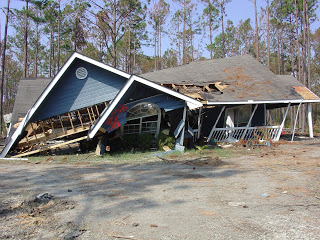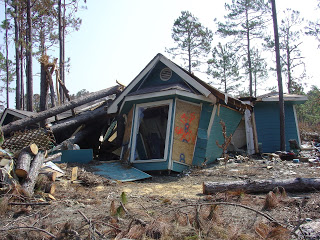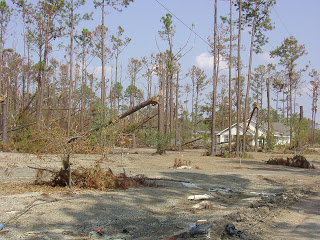Here is another very well reasoned editorial from our friends at the Clarion Ledger in Jackson:
Insurance: Katrina demonstrates need for bill
Fourth District U.S. Rep. Gene Taylor says he will fight again in 2008 for a bill to add wind coverage to federal flood insurance for protection from another hurricane like Katrina.
But, if so, he’s going to have to find an ally in the Senate.
The House bill, which Taylor co-sponsored, with the support of House Speaker Nancy Pelosi, D-Calif., added wind coverage to the National Flood Insurance Program. But the wind coverage provision was not included in a bill the Senate Banking Committee approved, The Associated Press reported. Sen. David Vitter, R-La., has blocked a vote by the full Senate because optional wind coverage and higher coverage limits were not included.
The Senate bill was sponsored by Banking Committee Chairman Chris Dodd, D-Conn., and Richard Shelby, R-Ala. Taylor said he can understand Dodd’s objections because of the insurance interests headquartered in his state. “Shelby is the one I keep scratching my head over,” he said, because of his constituents in coastal Alabama.
Republican Mississippi Sen. Thad Cochran supports the multiple-perils bill. He should lobby his colleagues for it. Democratic Sen. Hillary Rodham Clinton had introduced a similar bill in the Senate.
Taylor’s bill had already been massaged by the House to meet potential objections. Pelosi led a 13-member congressional fact-finding mission to the Coast in August. Listening to victims at a town hall meeting in Bay St. Louis, she pledged to help, but even she acknowledged: “We’re up against a mighty force (lobbying efforts of the insurance industry).”
Pelosi helped push Taylor’s “multi-peril” Flood Insurance Reform and Modernization Act of 2007 through the Financial Services Committee in July, and it went to the Senate with full House backing as HR3121. It would allow flood insurance policyholders to purchase wind insurance or as a stand-alone policy, and increases limits.
Catastrophic insurance for hurricanes remains a need for U.S. coastal areas nationwide, so it could – and should – be resurrected. Mississippi is not alone in facing higher insurance premiums, if it’s available.
As has been noted in www.clarionledger.com/forums under “Katrina-related issues,” home insurance rates are skyrocketing in all the nation’s coastal areas. The experience with Katrina on the Coast, still waiting for insurance and government promised relief, is evidence for HR3121.
As one reader wrote: “My husband and I chose to stay here, even though we lost everything we owned, because of his business. It cost everything we had and then some to build a new home, miles away from the water and insurance was still astronomical. But … if we waited for progress to be made down here, we would be dead.”
HR3121 should not be allowed to die. The very life of the Coast could be at stake.

 This is a picture of the house across the street also smashed and flooded. The window in the house was removed by the owner as they salvaged some of their contents from the interior. In both cases the contents of these houses stayed with the house instead of being swept from it like so many others.
This is a picture of the house across the street also smashed and flooded. The window in the house was removed by the owner as they salvaged some of their contents from the interior. In both cases the contents of these houses stayed with the house instead of being swept from it like so many others.